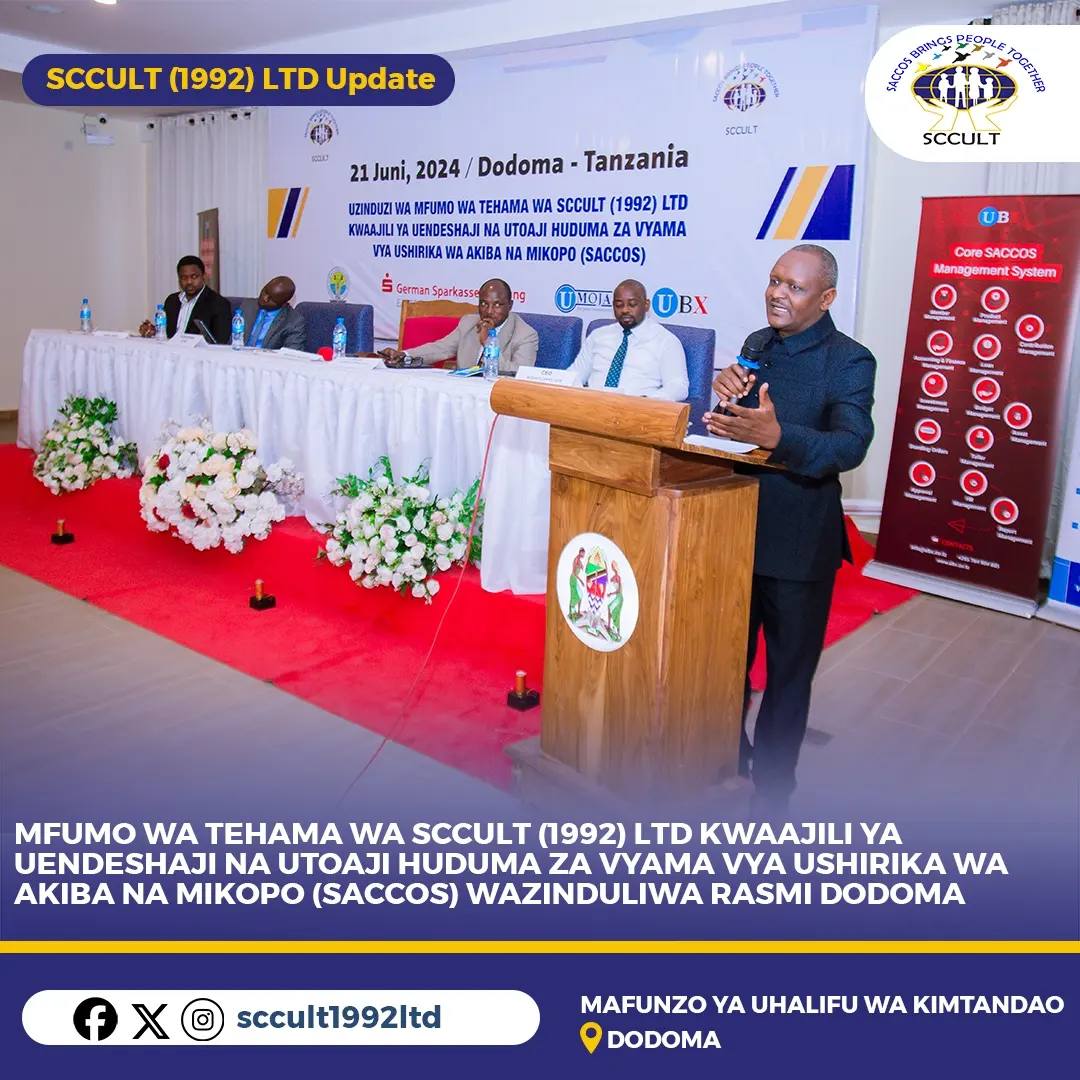Tanzanian SACCO League Launches Digital IT Management System
2024-06-27The Savings and Credit Cooperative Union League of Tanzania (SCCULT) on June 21 launched a new digital information technology (IT) system to improve the efficiency, transparency and accountability of its member Savings and Credit Cooperative Societies' (SACCOs) operations, while also providing a solution that will simplify their financial transaction management.
SCCULT developed its SACCOS Management System to help with:
- Improving Work Efficiency. It facilitates record keeping, monitoring of loans and savings, and management of member assets, which reduces human error and saves time.
- Accountability and Transparency. The System increases transparency in financial transactions, facilitating better audits and ensuring SACCOs have accurate and timely information about their financial status.
- Reducing Operational Costs. By using this technology, SACCOs can lower the costs associated with maintaining written records, which means a reduction in the use of paper and the time staff spends on administrative tasks.
- Information Security. The System provides a high level of protection for member information and financial transactions through modern cybersecurity methods.
- Timely Access to Information. SACCO members can access their financial information and important reports easily, quickly and remotely.
SCCULT launched the System at an event held in conjunction with the Tanzania Cooperative Development Commission (TCDC).
According to a TCDC news release on on the launch, Dr. Benson Ndiege, Registrar of Cooperative Societies and Chief Executive of the TCDC, had urged SACCOS to use more digital systems in the operation and processing of member information to improve both performance and security.
SCCULT developed the System in partnership with UBX Company, Umoja Switch, DSIK and various SACCOS. League leaders believe it will help all SACCOs improve their performance and increase the confidence of their members and other stakeholders.
The Savings and Credit Cooperative Union League of Tanzania is a member of the African Confederation of Cooperative Savings and Credit Associations (ACCOSCA), a direct member of World Council of Credit Unions.
